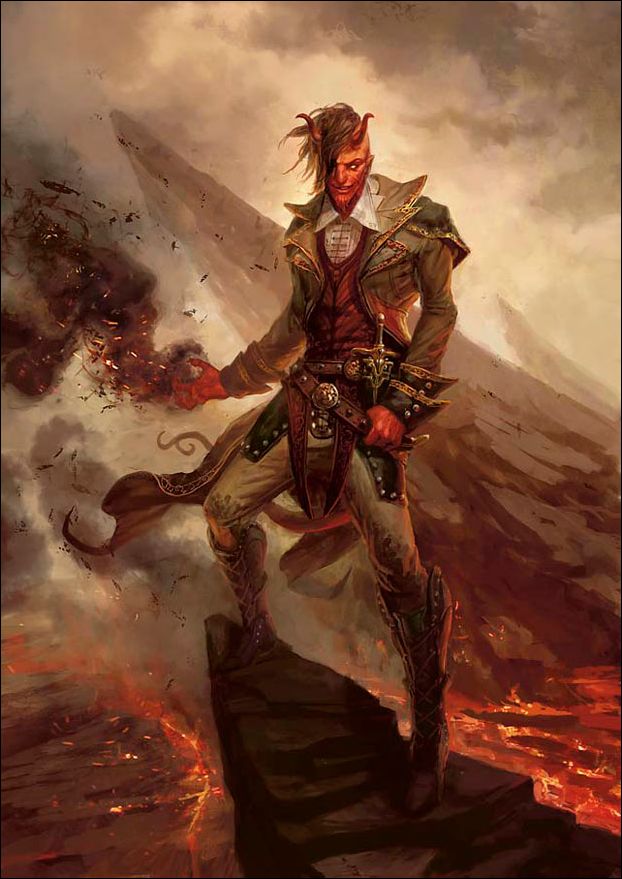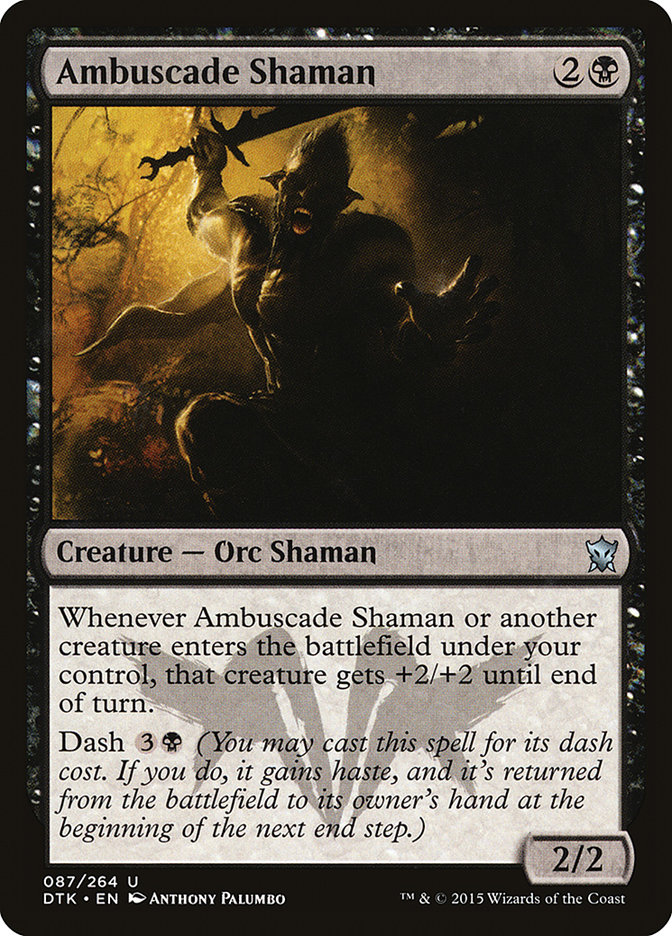Happy Tuesday, gang, and thanks to everyone that sent me their Top 8 Magic cards! Last week, many of you submitted your favorite Magic card of every color,
including your favorite multi-colored, artifact, and land cards, and it was fun to read them all. I particularly love stories about how you loved a card
that got you far in a tournament, and those cards with memories tied to them are the best ones. I was glad that many of ours matched, but I’m still waiting
on the camaraderie of the Tibalt fandom.

What a dreamboat.
I saw a lot of variety on favorite green cards, and this one was a tricky one for me too; green is pretty wide reaching, so choosing one was hard. There’s
cards like Pelakka Wurm, not a particularly strong card in practice, but great to cast. It’s never bad, so long as you have the mana, and there’s something
to be said for workhorse cards. Eternal Witness has her own firmly-established fan base, and for some, Den Protector, Recollect, and other imposters need
not apply.
Close to the top of the list for me was a favorite build-around from Time Spiral, where everything was getting turned around: Primal Forcemage.
It’s a subtle but exciting ability made to combine with cards with suspend, but it also worked with the newly keyworded flash, and it combined well with non-suspend creatures with haste, too. It
pumped tokens, making innocuous cards like Scatter the Seeds a combat blow out. There was a lot of potential with something like the Forcemage, and
although my brewing spirit was pretty nascent when Time Spiral came out, it was one of the first such cards I identified as a potential
build-around.
Although it’s slipped by nearly unnoticed, we’ve gotten a similar version in Dragons of Tarkir that’s ready to roar across the field and help your
hasty buddies do the same. Here’s Ambuscade Shaman!
In a lot of ways, Ambuscade Shaman is an upgrade to the classic Forcemage, pumping itself if you decide to dash it, and there’s lot of low-cost haste cards
in the format right now that we can leverage to make this new black Primal Forcemage work.
Admittedly, though, none are nearly as exciting as Alesha, Who Smiles at Death.
Alesha is one of the more brew-friendly of Fate Reforged‘s khan cycle. Her ability to recur two-power creatures opens up the exciting possibility
of resurrecting anything from a Firedrinker Satyr to a Hornet Queen. During the four months since she’s been spoiled, I’ve been fiddling with different
combinations of colors and critters to try and find the right balance. Then Ambuscade Shaman was spoiled, and my previous plans quickly became inferior,
and I dug my heels in to build a reanimation strategy that utilized the format’s best enablers and ramped the fun up five or six notches.
Creatures (24)
- 4 Nighthowler
- 4 Satyr Wayfinder
- 4 Generator Servant
- 4 Goblin Rabblemaster
- 4 Alesha, Who Smiles at Death
- 4 Ambuscade Shaman
Lands (24)
Spells (12)
Sideboard

Before digging in, I’ll simply add that Satyr Wayfinder is awesome, as is Commune with the Gods; I’m guessing you don’t need an explanation for them!
Creatures
Alesha, Who Smiles at Death is a perfectly reasonable fighter by herself, able to square off with most aggressive creatures without a problem, including
Goblin Rabblemaster, Shorecracher Elemental (sort of), and Fleecemane Lion. Never underestimate first strike. Her ability costs BB in this deck, as we’re
lacking white, but with a little help from our friends, chances are that won’t be hard to do. Her and the Ambuscade Shaman work hand-in-hand, and the
ability to dash the Shaman is a nice touch, giving it a hard-to-target feature while dealing more damage than it would if it were attacking like a normal
creature. Generator Servant, for those who hadn’t seen it before, is a perfect pairing for Alesha, allowing you to cast her, attack, and recover your
Servant, who will also be attacking. If you had an Ambuscade Shaman the turn before, you’ll be crashing for eight damage just between the two of
them! The Servant, if nothing else, is a great mana battery, too if you just need to cast more than one spell each turn. With as much graveyard work as
we’re doing, Nighthowler seems like something worth trying. Because it naturally has zero power, it can be targeted by Alesha even if it would normally
have three, five, or ten power. Generator Servant can provide the first body, allowing you to avoid the can’t-cast-it-early downside. Finally, Goblin
Rabblemaster is the haymaker that also happens to be a spicy target for Ambuscade Shaman. Not only is the Rabblemaster one of the more solid red cards in
the format, but both its power and its trigger work with our two key pieces. The Goblin token also gets Ambuscade Shaman’s benefit! Of course, if you recur
Rabbles as part of Alesha’s trigger, you don’t get a token, but if the Goblin comes in as a 4/4, it’ll be much more likely to untap.
Spells
The spell list, except for Commune with the Gods, is pretty flexible. Murderous Cut lets you slim down their blocker count, using binned spells and lands
to fuel the fire. Lightning Strike is a somewhat overlooked burn spell these days, but Stoke the Flames didn’t seem quite right, and Wild Slash seemed
deck-specific. I didn’t have Dragons for Draconic Roar, so voila! Lightning Strike! A single Whip provided opportunity for reanimation in the lategame.
Whipping Alesha back with enough mana means she can bring another creature with her. And the lifelink is pretty good; can you imagine if Whip didn’t have lifelink? How different would the last two years of Magic been? Would Mono-Black Devotion have ever been so dominant?
Yeah, probably. Pack Rat was gross…
Lands
Being a shard is a liability in the time of clans and wedges. Without Savage Lands, we have to compile a hodge-podge of dual lands, Temples, and
fetchlands. There’s little chance that this smattering of mana producers is exactly right, but one thing I feel confident about is the two copies of
Urborg, Tomb of Yawgmoth. At first, the deck seems like it could function fine off just one or two black sources at any one time, but with Alesha’s ability
demanding a heavy color commitment, it’ll be nice to use those Llanowar Wastes and Mana Confluences for the other color you need. Satyr Wayfinder
helps put our hands on the right colors, but there’s no question that doing it this way is a challenge. However, green has the best graveyard enablers, so
we make lemonade.
Sideboard
Because this is a creature-centered deck, we want to keep the fifteen cards in the board as living as possible. That being said, Wild Slash is just what
you need to stay on top of a turn-1 opponent. Both of this deck’s fetchlands can find a Mountain, keeping you on time in an otherwise shaky manabase.
Reclamation Sage seems like a no-brainer; it’s a good target for Alesha with upside, and it’s perfectly fine to cast as a two-for-one.
Minister of Pain seems like an interesting card, and I’ve almost run it in a number of decks before kicking it out for Drown in Sorrow or most any other
better card, but the ability to target and continuously exploit itself keeps any deck low on blockers. No more Insect tokens for you! Alternatively, you
can exploit an Alesha and resolve a second one if you find yourself flush with khans in hand. Finally, I like a two and two split between Rakshasa
Deathdealer and Flamewake Phoenix. Different decks have weaknesses; black-centered decks will have trouble dealing with Deathdealer in the lategame, as you
can push above a Bile Blight or Drown in Sorrow or regenerate from a Hero’s Downfall or Murderous Cut. Flamewake Phoenix, on the other hand, is great
against decks where countering and sweepers is a thing. If you have an Ambuscade Shaman after your opponent’s destroyed the world, stick it, resolve its
trigger, and recover a downed Phoenix, which will also get the bonus. With an Ambuscade Shaman, you’re always in the game.
This version of the deck was brought about by goldfishing and determining how hard it was to hit the “combo,” and it turned out to not be too challenging,
albeit it a little slow. To test it for real, I simulated a four-round, sideboarded Daily Event.
Round 1 (Atarka Red) – 1-2
As expected, this was a difficult match in game 1. My creatures didn’t comprise much of a roadblock, and not having something like an Elvish Mystic or even
a Sylvan Caryatid to block was suboptimal. In game 2, I boarded in my Slashes, drew three of them, and beat a mull to six. The last game saw both of us
keeping creature-light hands, but he burned me down and slammed back-to-back Rabblemasters to finish the job.
Round 2 (Abzan
Megamorph
) – 2-1
I thought Jund was a tough manabase, but this guy might as well have been playing five colors. Although his deck jammed Fleecemane Lion and Warden of the
First Tree, he never hit black until the fourth turn of the third game, and that’s only because I gave him Urborg mana. He proceeded to use it for a
Collected Company that bricked in a really critical blocking turn.
Round 3 (Mono-Red) – 2-1
Not having to play around Atarka’s Command is nice.
This was a more linear game, and although I got trounced in the first game, I rallied back to take two from him to close the match. I drew only one
Minister of Pain in the last game, but it was enough to destroy every creature he had, and Alesha went to work, threatening to recover it each turn
thereafter.
Round 4 (Ashiok.dek) – 2-1
My final opponent played perhaps an outdated U/B deck with no threats that I saw outside of Ashiok, Nightmare Weaver, which got cast every game. Ambuscade
Shaman and Goblin Rabblemaster did the majority of the work, and Flamewake Phoenix was excellent out of the sideboard. The aforementioned dashed Ambuscade
Shaman and Flamewake Phoenix combo was great. This was the only match I brought in the Deathdealer, but I never drew it. Reclamation Sage came in, too, but
I never saw the super-scary Perilous Vault to answer it, so it was always just a 2/1.
This deck, while probably not the best to play online due to all the triggers you need to click through, was great fun in practice. It was softer to aggro
decks, as my creatures don’t stand up as well without a permanent boost. Maybe a 1/3 like Qarsi Sadist is possible, which can be resurrected and exploited
every turn to shorten the clock, even if your opponent blocks your Alesha every time. Arc Lightning over Lightning Strike might also help in those faster
matchups, and it deals the exact same damage to a single target later in the game. I’m a creature deck, so losing the instant part of the Strike isn’t a
big deal; I’m casting my spells on my own turn. Dosan, the Falling Leaf would be happy (and compatible with Alesha.)
I’d be interested to try this in some of the Abzan control/megamorph lists, too, but this proved to be a great time. If your local shop is bursting with
aggro decks, you might want to steer clear, but control and midrange-heavy metagames might be favorable for you with this deck in your hand.
Ambuscade Shaman has many more applications than this; what’s a fun one you can think of? Maybe it and Primal Forcemage can tag team a cutesy Modern brew?
Maybe you’ve cast Revel of the Fallen God with a Shaman out? Be careful as you start looking, as the possibilities will ambush you!



